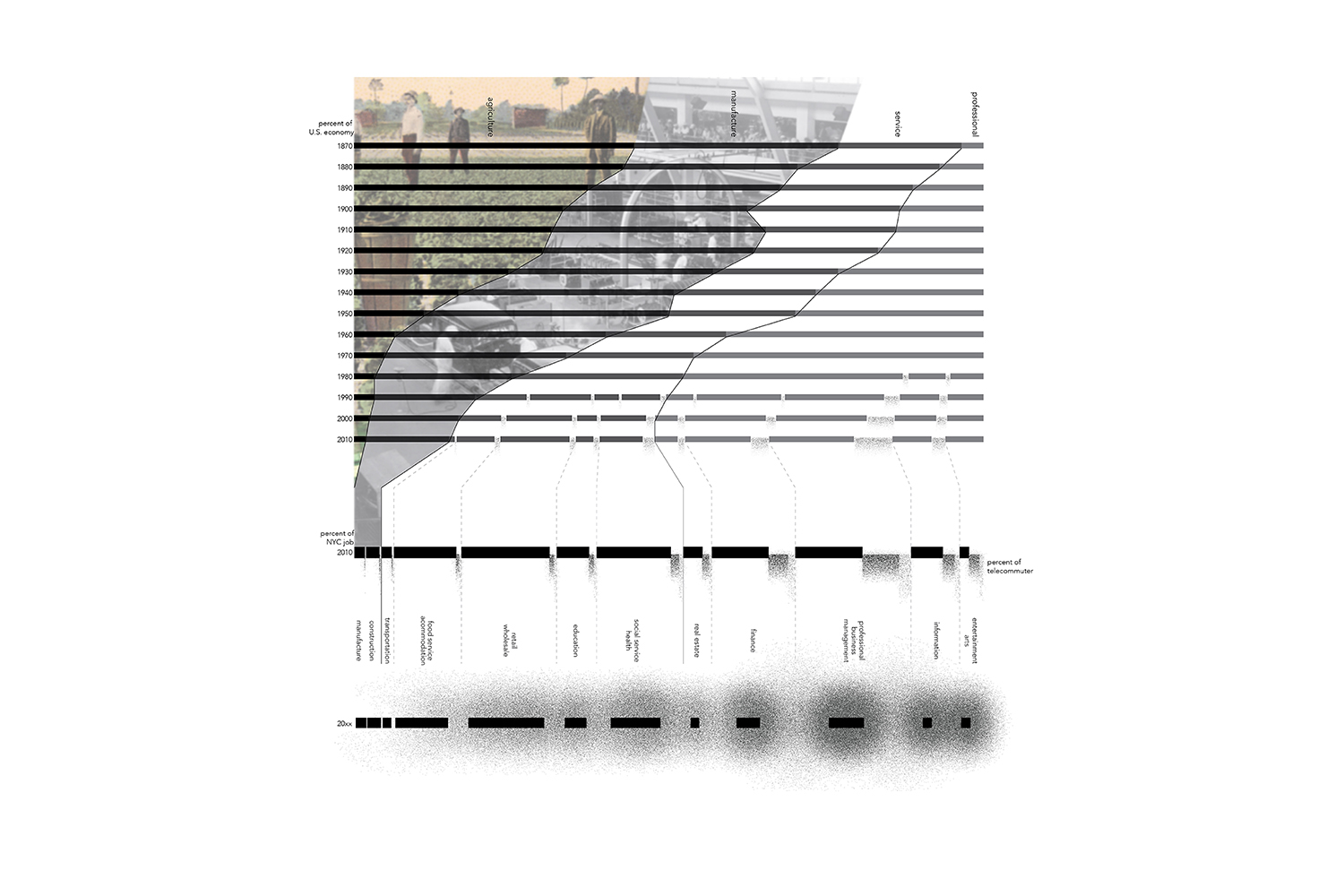
Manhattan without Ground
We once thought that Manhattan—the capital of 20th century civilization—represented the total split between modern human society and the primitive. However, in the past decade, the crisis of modern society has developed: the increasing inequality and polarization among classes, and subsequently the jeopardizing of capitalism. Nature, which was expelled from the city, comes back in the forms of disaster that the city isn’t able to cope with.
The project is trying to find a new typology of city through reevaluating the current state of Manhattan in regard to this crisis and its possible solutions. By studying the evolution of the office as a network of production and communication, understanding the role of corporations in the development of the modern cityscape as well as personal wealth, the project fills the voids above the avenues and streets that were envisioned by the 1811 Commissioner’s’ Plan of Manhattan.
The extruded volume of the grid lines is comprised of glass floors that become a new medium between skyscrapers. These filled voids not only free people from the ground, which is endangered by the rising sea level, but also provide a possibility, by directly confronting the existing walls, to dissolve the distinct boundaries that were set to divide space as private property. It emancipates the network of production from the repeated typical plan and to overcome the schism that the grids initiated between the exterior and the interior, the public domain and the private property, as well as the poor and the wealthy.
The emerging shared economy and technologies such as AR can therefore become new tools to facilitate the making of a porous city that is more dynamic and accessible, a pure vessel of social and economic circulation instead of a device of segregation and privatization, and people can truly have “the right to the city.”
The project is trying to find a new typology of city through reevaluating the current state of Manhattan in regard to this crisis and its possible solutions. By studying the evolution of the office as a network of production and communication, understanding the role of corporations in the development of the modern cityscape as well as personal wealth, the project fills the voids above the avenues and streets that were envisioned by the 1811 Commissioner’s’ Plan of Manhattan.
The extruded volume of the grid lines is comprised of glass floors that become a new medium between skyscrapers. These filled voids not only free people from the ground, which is endangered by the rising sea level, but also provide a possibility, by directly confronting the existing walls, to dissolve the distinct boundaries that were set to divide space as private property. It emancipates the network of production from the repeated typical plan and to overcome the schism that the grids initiated between the exterior and the interior, the public domain and the private property, as well as the poor and the wealthy.
The emerging shared economy and technologies such as AR can therefore become new tools to facilitate the making of a porous city that is more dynamic and accessible, a pure vessel of social and economic circulation instead of a device of segregation and privatization, and people can truly have “the right to the city.”
Location
New York City, NY, USA
Category
Urban, Conceptual
Status
Competition, 2015
New York City, NY, USA
Category
Urban, Conceptual
Status
Competition, 2015






